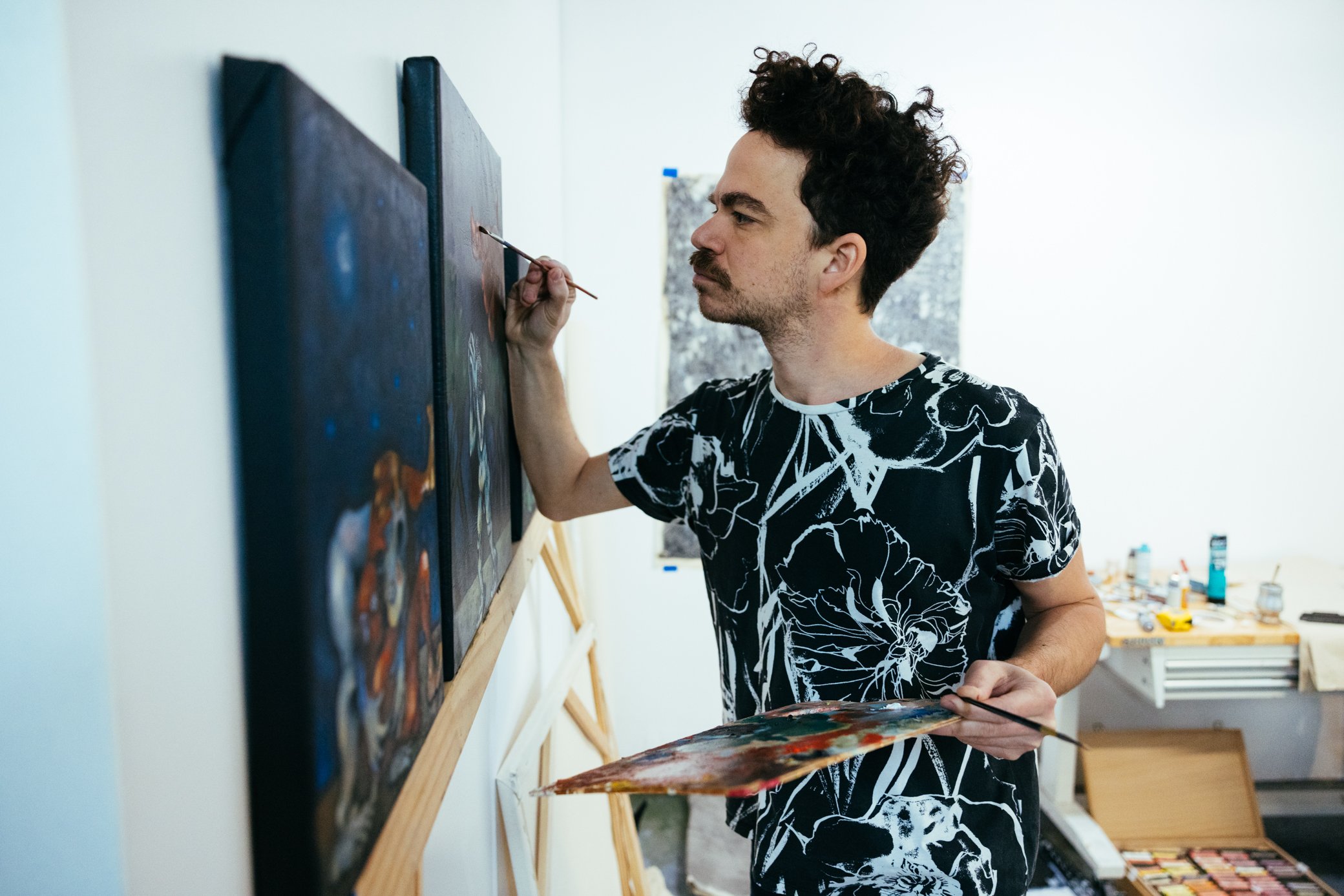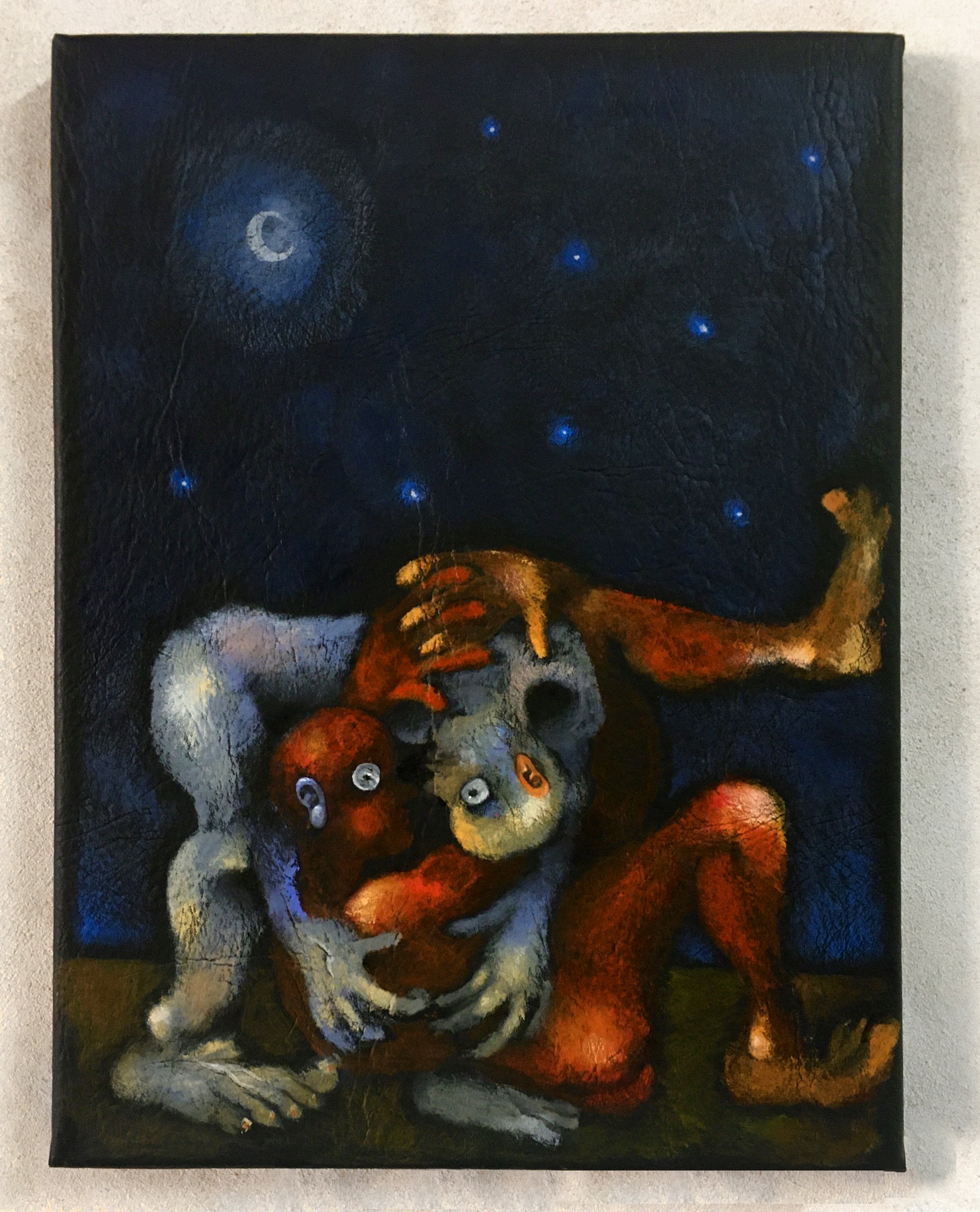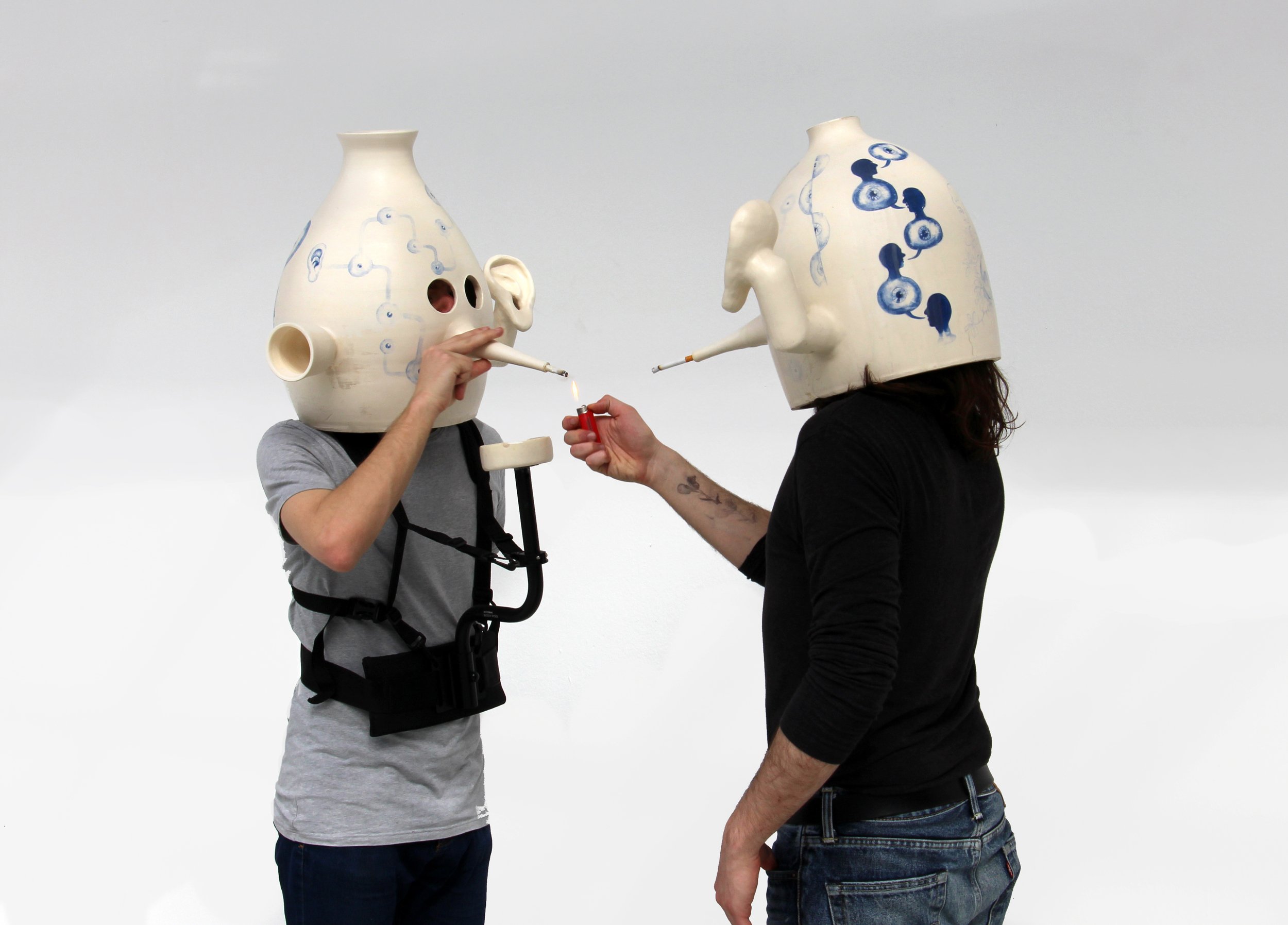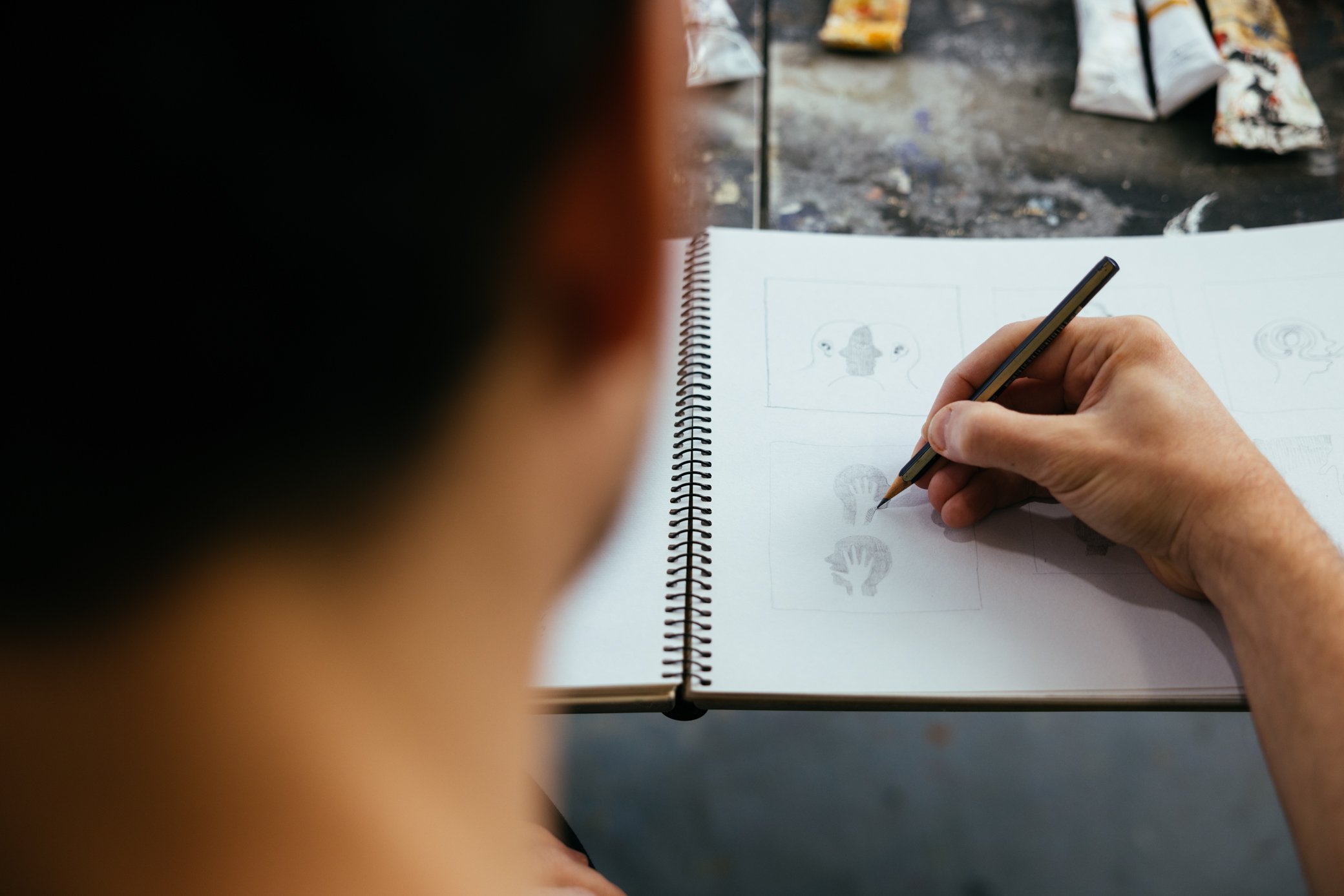May 2023
Andrés Aizicovich
Film directed by Alexa Caravia for Fountainhead Arts
Andrés Aizicovich’s practice develops specific projects, each with its own materials, medium, and technical approach. He is always sketching, which he uses as a starting point for sculptures, machines, installations, paintings, or conceptual experiments. The Buenos Aires-based artist feels his work is affiliated with a post-Duchampian tradition, never settling in one category or another.
For example, his recent work, Synesthetic Lieder, explored language, communication, oral transmission, conversation, and translation. His research draws upon astronomy, quantum physics, mysticism and science fiction to question how he might transform speech into matter, making words an artistic medium. In this project, Aizikovichs’ sculptures appear to be antique metal diving helmets, but the nostalgia is broken when he attaches flat objects and tubular structures made from metal, glass, and ceramic. It soon becomes apparent that they are meant to be interactive, and designed to be worn and experienced by participants. The helmets function as sound instruments as the users explore them through touching. Beginning to sense each other’s presence, it creates a synesthetic moment, when they hear music, but they see shapes. The artist's main intention with this artwork is to seek new forms of interaction in the face of the hyper-connectivity of the digital world that he feels may disconnect people. So he tries to bring connection back to basics in an immediate way, using sound and touch.
For many artists, residencies can alter their creative trajectory in a positive way, often because they have left their daily routine to experiment and try new things in the safe space of the residency experience. Aizikovich said about his time at Fountainhead, “I decided to refocus on painting and drawing, two mediums that had been somewhat relegated from my artistic practice despite being the discipline in which I was educated during my formative years. Surrounded by two painters, I regained my enthusiasm for painting and many of the conversations we had during our work breaks involved problems with the language of painting, representation, and visual epistemology.”
Words by Clayton Campbell







